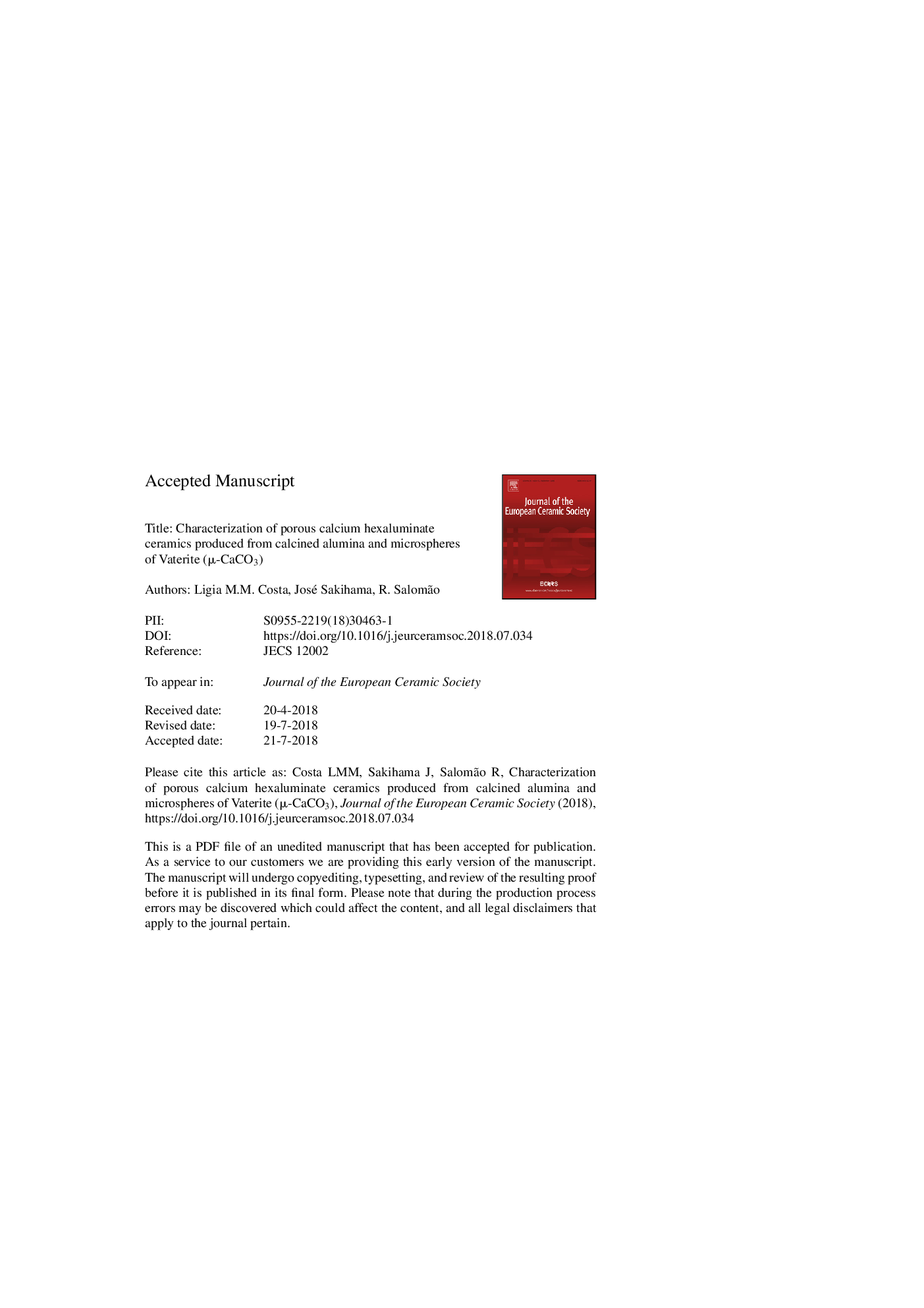| Article ID | Journal | Published Year | Pages | File Type |
|---|---|---|---|---|
| 8948573 | Journal of the European Ceramic Society | 2018 | 30 Pages |
Abstract
The evolution in the microstructure of porous calcium hexaluminate (CaAl12O19 or CA6) formed in situ is significantly affected by the characteristics of precursor raw materials. In this study, microspheres of Vaterite (μ-CaCO3) of different average sizes (5, 7 and 15âμm) were mixed with fine α-Al2O3 and sintered. During heating (590-753â°C), the Vaterite particles collapsed and produced spherical pores surrounded by regions of high CaO concentration. Different quantities of low-density-and-melting-point calcium aluminates (C12A7, CA and CA2) were formed above 1100â°C. Small portions of a liquid phase were observed for samples containing thin Vaterite particles, which resulted in a denser structure comprised of CA6. The samples prepared with coarse Vaterite significantly expanded and the asymmetric shape of the CA6 crystals prevented densification and generated highly porous structures. Therefore, the tailoring of Vaterite particles' characteristics enables the design of physical properties of CA6 porous structures according to the application aimed.
Related Topics
Physical Sciences and Engineering
Materials Science
Ceramics and Composites
Authors
Ligia M.M. Costa, José Sakihama, R. Salomão,
